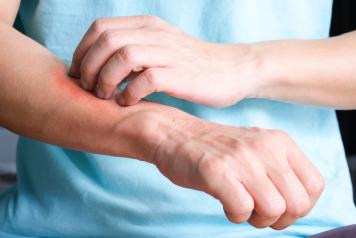
Eczema & Atopic Dermatitis
This skin condition is caused by a genetic anomaly, with a deficiency of certain components of the skin. There is onset of major skin dryness, leaving the skin less able to protect against the irritants, allergens and pollutants that can penetrate it more easily.

Psoriasis
Cutaneous psoriasis is a chronic inflammatory disease of the epidermis. It is characterised by the appearance of red patches on the body, covered by white scales. The scales are small flakes of dead skin that are shed.

Post Cancer
The post-cancer period can be characterised by side effects of the skin and mouth, such as scarring, burning, irritation of the scalp, skin and mucous membrane of the mouth. Suitable thermal treatments exist to relieve these ailments. Group workshops contribute to a more holistic approach to this phase of life after cancer
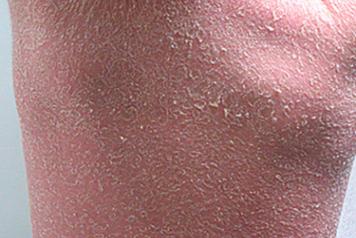
Ichthyosis
Ichthyosis is a monogenic genetic disease characterised by abnormally dry skin that sheds, giving an appearance like fish scales. It is caused by an abnormality in a gene that plays a role in the formation of the skin barrier.
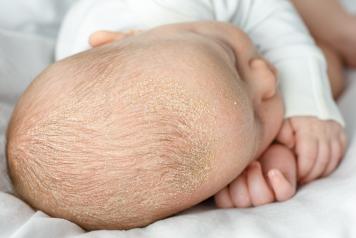
Seborrheic Dermatitis
This is an inflammatory skin disease characterised by red patches that are more or less covered with yellowish flakes with a predilection for seborrheic areas, i.e., the areas where sebum is the most abundant. Sebum is a skin-protecting oily substance secreted by the sebaceous glands.
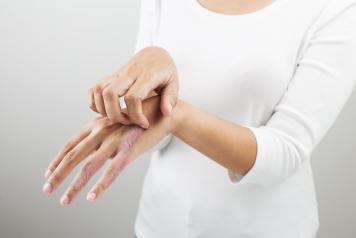
Dyshidrotic eczema
Dyshidrosis, also known as pompholyx, is a form of blistering eczema localised to the hands and feet. Blisters are found on the palms of the hands and soles of the feet as well as on the sides of the fingers and toes.
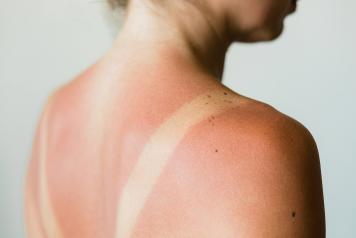
After-effects of Burns
Burns are damage to the skin that can occur due to a thermal attack (flame, boiling liquid, etc.), exposure to radiation (sun, ionizing radiation, etc.), contact with a chemical product (lye, hydrochloric acid, etc.) or more rarely due to contact with electricity.

Skin healing and scarring
Healing is a skin repair process that takes several months and includes different stages. After a skin break occurs, a clot develops almost immediately with an inflammatory reaction consisting of an influx of cells, particularly platelets to produce growth factors while enzymes clean the wound.
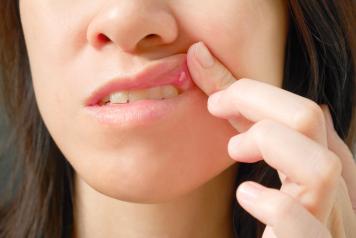
Cutaneous and mucous lichen
This is a chronic inflammatory disease of the skin and mucous membranes that affects around 1% of the population, characterised by abnormal keratinisation, and generally develops on the inside of the cheeks.
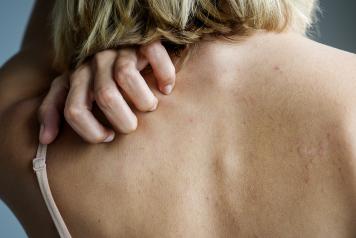
Pruritus & Prurigo
Pruritus is a symptom more commonly known as itching while prurigo covers all skin lesions caused by pruritus. Itching is an unpleasant sensation that leads to scratching, through a reflex phenomenon, which is therefore difficult to control.
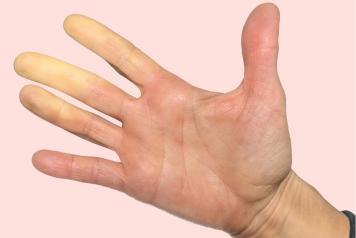
Scleroderma
Scleroderma is a rare disorder known as an "autoimmune" disease, i.e. where the immune system does not function properly and attacks the body’s own tissue. Hardening of the skin, known as fibrosis, is the main symptom of this disorder.

Acne
Acne is a very common condition in adolescents, which can sometimes persist into adulthood. It is characterised by "spots" on the face, and sometimes on the back and chest. The first characteristic symptoms of acne are the appearance of blackheads and whiteheads, followed by redness.




